- 注册
- 登录
- 小程序
- APP
- 档案号


MVRDV · 2021-01-22 09:20:31
MVRDV为万科集团设计的新总部大厦从多个方案中脱颖而出 。这座250米高的万科总部大厦位于深圳——MVRDV内部称之为“万科3D城市”,由8个相互堆叠的体块组成,包含办公、住宅和文化空间,从底部四个独立的体块堆叠至顶部单独的塔楼,该项目将于2019年年中开始施工。这个雄心勃勃的方案预示着下一代摩天大楼的设计将实现 “3D城市”的理念——这是MVRDV多年来一系列研究的硕果。
MVRDV has won the competition organized by Chinese real estate developer Vanke to design their new headquarters building in Shenzhen. The 250-metre-tall Vanke Headquarter Tower – unofficially called Vanke 3D City by MVRDV – is due to start construction in mid-2019, and comprises a cluster of eight interlinked blocks of offices, housing and culture, rising from four separate bases to a single crowning tower. It is an ambitious proposal that heralds the next generation of skyscraper design, following the concept of the “three-dimensional city”—anidea that is the culmination of a series of research projects conducted by MVRDV.
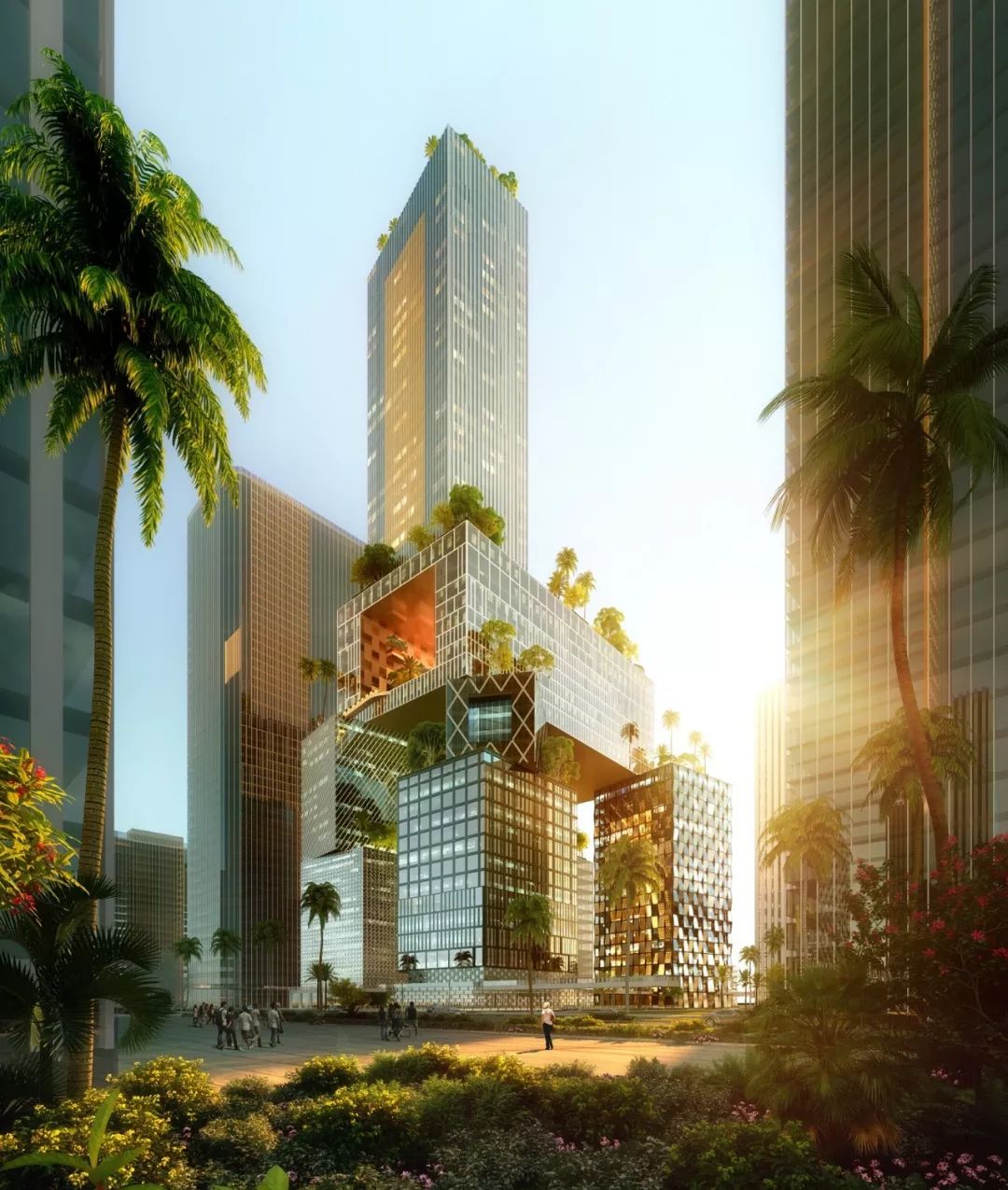
图/Image: © ATCHAIN
“万科3D城市”由8个相互堆叠的体块组成
Vanke 3D City comprises a cluster of eight interlinked blocks
万科总部大厦的愿景不仅是为集团员工提供办公场所,它还将形成一个充满活力的多功能城市街区,包括可出租的办公室、零售空间、餐厅、酒店和丰富多彩的户外空间。这个项目包括2个地块,针对这种情况,MVRDV用一个由8个体量组成的堆叠方案将2个地块连接起来——这个独特而具有前瞻性的设计得到了深圳政府的支持——一个250米高、总建筑面积为16.7万平方米的城市综合体呼之欲出。
The ambition for Vanke Group’s headquarters building in Shenzhen was not only to provide office space for the real estate company’s own staff, but to form a vibrant mixed-use city block containing leasable offices, retail space, a restaurant, a hotel, and plentiful outdoor spaces. This program was proposed to occupy two lots separated by a road. In response to this condition, MVRDV proposed a stack of eight blocks that connects these two plots and bridges the road – a unique and forward-thinking design feature which has received support from the city government – to create a single 250-metre-tall building with a total of 167,000 square meters of floor space.

图/Image: © ATCHAIN
该综合体最大的开放式立面“城市之窗”提供了俯瞰深圳湾的视野
The building's large openings provide 'windows to the world' with views over Shenzhen Bay
组成“万科3D城市”的8个体块意图在建筑的多样性和凝聚力之间建立平衡,不同的体块展现了个性化的立面处理方式。每个体块都对应着一个关键词,这些关键词源自万科集团的核心精神:健康、能源、开放、社交、绿色、自然、未来、创造力。其中4个建筑体块的一个立面上呈现出缩进式或贯穿整个体量的透空设计,创造出包含有中庭、公园和广场的“城市之窗”。这些半公共空间与各体块屋顶露台的绿地相结合,形成了丰富的网络型休闲区域。
The eight blocks that make up Vanke 3D City are designed to strike a balance between architectural diversity and cohesiveness, with each displaying a different façade treatment. Each block corresponds to a keyword inspired by the core values of Vanke: ‘health’,‘energy’, ‘open’, ‘team’, ‘green’, ‘nature’, ‘future’, and ‘creative’. Four of the blocks also have either an indent on one façade or a hole that punctures the entire depth of the block, creating ‘windows to the world’ that house atriums, parks, and plazas. These semi-public spaces combine with green spaces on the exposed roofs of each block to create a rich network of recreational areas.
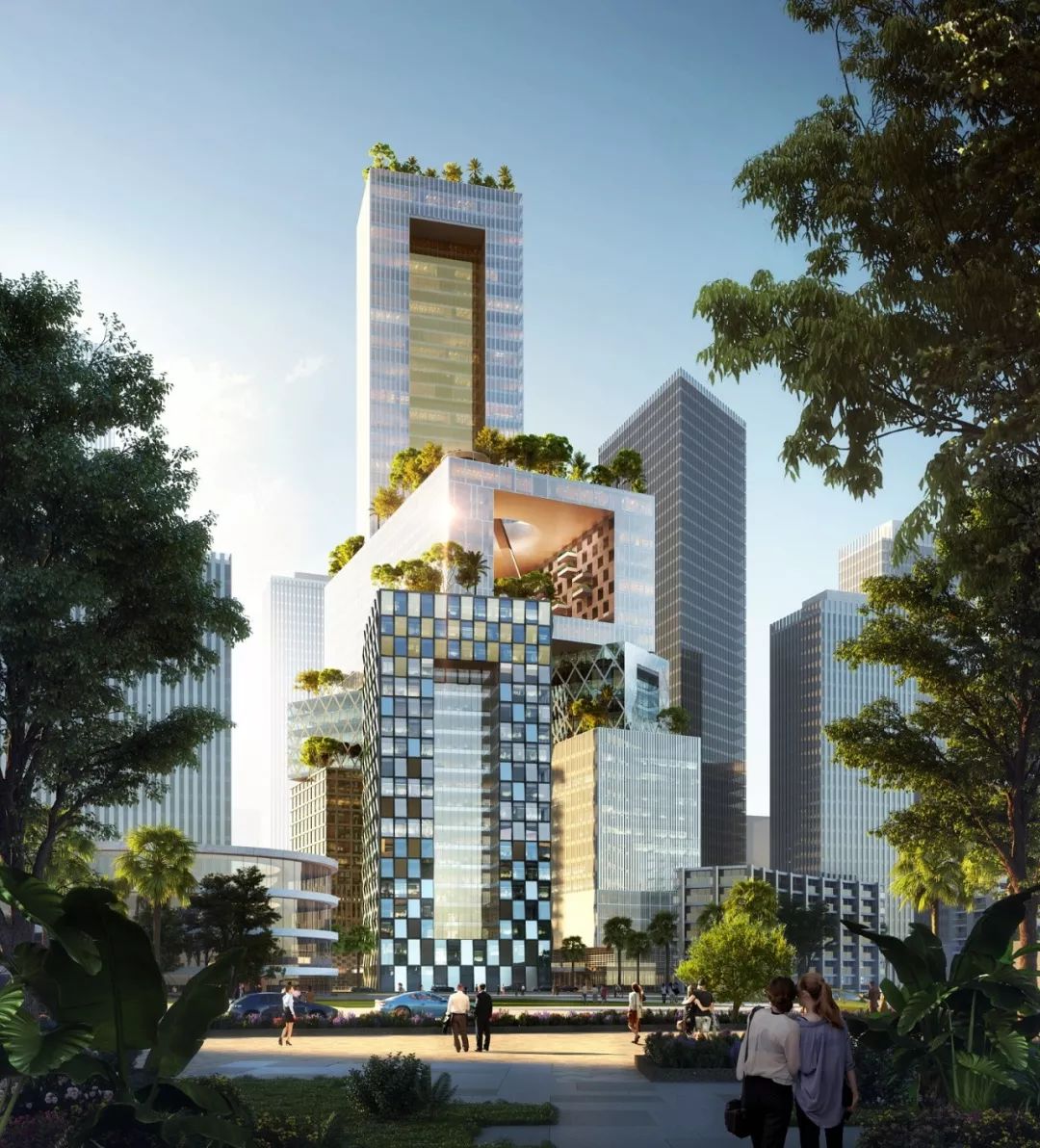
图/Image: © ATCHAIN
万科总部的办公空间将位于底部四个体块之一,如图所示
Vanke's own offices will be housed in one of the four corner blocks, shown here in the foreground
“‘万科3D城市’可以被视为一种新型的摩天大楼。通过将两块独立地块上所规划的功能实体层层堆叠,两座独立的万科总部大厦变成为一座‘万科城市’。”MVRDV联合创始人 、项目主创建筑师Winy Maas表示:“它化平凡为非凡。”
“Vanke 3D City can be seen as a new type of skyscraper. By stacking the required programmatic entities, initially proposed for two separate plots, on top of each other, the two individual Vanke Group Headquarter buildings are turned into a Vanke City”, says Winy Maas, principal and co-founder of MVRDV.“They turn the ordinary into the extraordinary.”
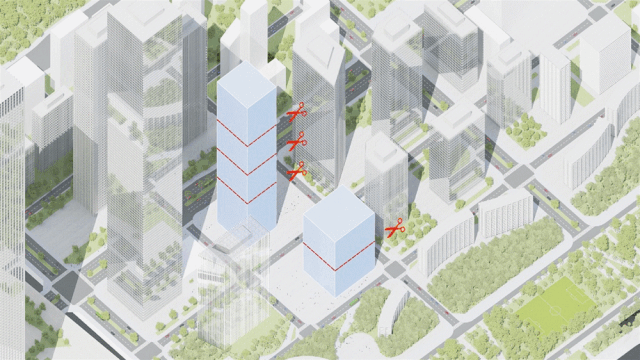
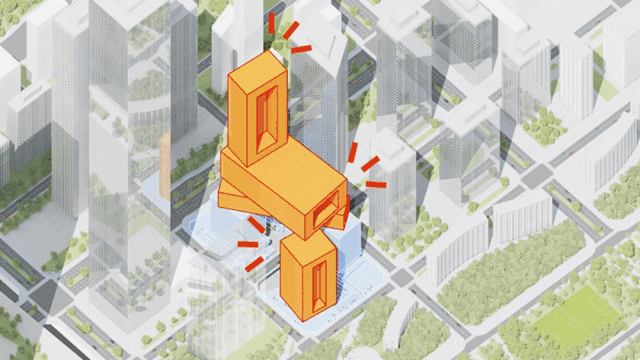
图/Image: © MVRDV
Winy Maas补充道:“通过打开体块的方式形成了一系列宏伟壮观的中庭,可以俯瞰海湾甚至城市。楼梯和电梯将广场、花园、大厅以及体块连接起来,创造出一个在地面之上延续的城市结构——这是一个真正的三维城市。”
Maas adds: “By opening the buildings, a series of giant collective halls are created with a view over the bay and to the world. The plazas, gardens, and halls are connected by a series of stairs and elevators, linking the many blocks into a continuous urban fabric high off the ground—a true three-dimensional city.”
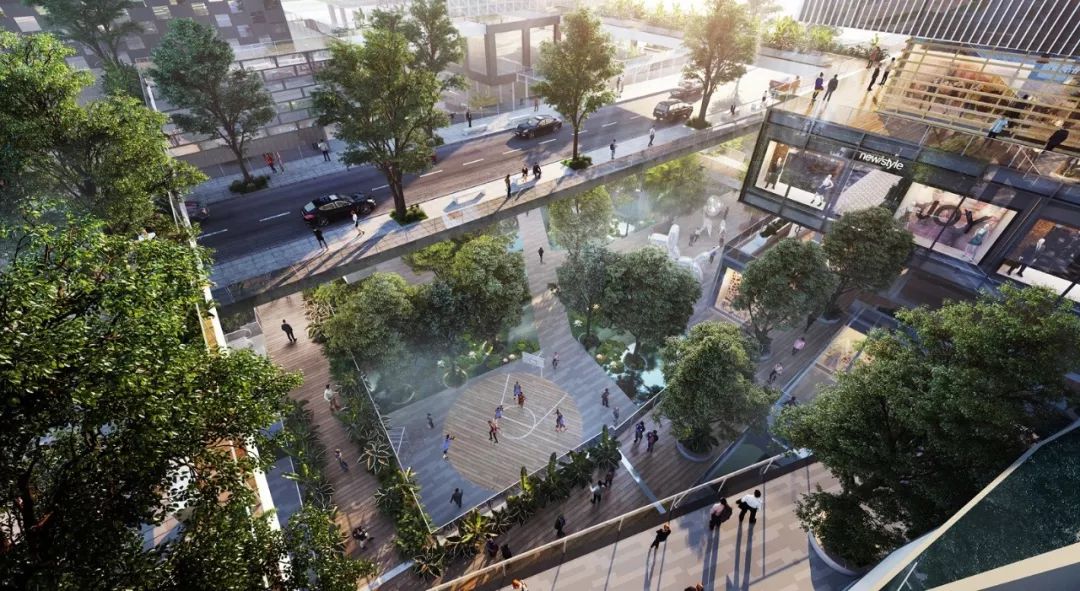
图/Image: © ATCHAIN
" 万科3D城市"底部是一个下沉式多层绿色公共空间
At the base of Vanke 3D City is a sunken, multi-level green public space
“万科3D城市”的底部是一个下沉式多层绿色公共空间,从地下二层延伸至地上一层,贯穿场地的道路也被整合在内。广场和人行道组成了一个荫蔽且通风良好的空间,让人们在深圳的热带气候中可以得到片刻的休息。下沉空间全天24小时开放,提供了通往四个底层体块商业和餐厅区域的通道,这是将典型的裙房转化并纳入塔楼的设计。空中的人行道也将延伸至邻近的开发项目,期望“万科3D城市”空中的步行空间在未来能够连接整个区域的建筑。
At the base of Vanke 3D City is a sunken, multi-level green public space, which extends from the second level below ground to the first level above, incorporating the road that cuts through the site. This network of plazas and walkways offers a shaded, well-ventilated space that provides a respite from the tropical climate of Shenzhen. Open 24 hours a day, it will offer access to the commercial and restaurant levels in the base of the four corner blocks, inverting the plinth typically incorporated into tower designs. The above-ground walkways are also designed to be extended into the neighbouring developments, in the hope that the pedestrian realm created at Vanke 3D City can spread to connect buildings throughout the district.
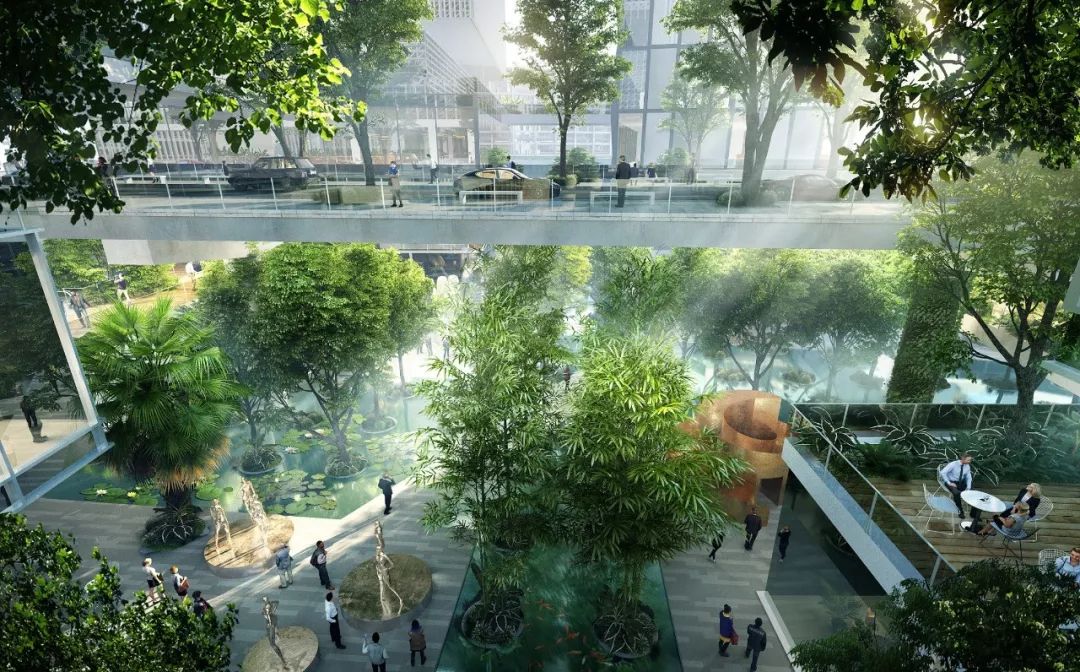
图/Image: © ATCHAIN
综合体底部的公共空间提供了通往商业和餐饮区域的通道
This public space at the base of the tower provides access to the project's commercial and restaurant spaces
“3D城市”的概念是由MVRDV两个并行的研究项目发展而来的。第一个研究是始于2009年的 “垂直城市”项目,该项目横跨数十年,研究如何通过使用集群类型学在高密度的城市环境中保持可持续的社会动力和独立性。其次是对摩天大楼设计演变的研究:在现代主义时期,摩天大楼通常只是一个竖向的巨型盒子;后来,各种变形结构发展起来;最近,出现了更多的“连接”型摩天大楼,即两个或两个以上的直筒结构,由天桥连接。“三维城市”是一种新的摩天大楼类型,它完全超越了以往的形式,受“垂直城市”的启发创造出一个集群型的摩天大楼。
The concept of the three-dimensional city is one that developed from two parallel research threads pursued by MVRDV. The first was begun by the Vertical Village project of 2009, which sparked a decade of investigation into how sustainable social dynamics and individuality can be maintained in dense urban environments by using cluster typologies. The second was a study into the evolution of skyscraper design: In the modernist period, skyscrapers were typically just an extruded rectangular ‘monolithic’ box. Later, singular structures with gestural forms developed, and more recently, another skyscraper typology has become popular, one the designers refer to as the ‘linked monolith’—that is, two or more extruded structures which are connected by sky bridges or show some other‘collective gesture’. The three-dimensional city is a typology that moves beyond the extruded monolith entirely, using the clustered form inspired by the Vertical Village to create a skyscraper that is composed primarily of collective gestures.

图/Image: © ATCHAIN
" 万科3D城市"预想将成为第一个下一代摩天大楼
Vanke 3D City is envisioned as the first in a new generation of skyscraper design
这个未来摩天大楼的设计方案满足了项目计划中对可持续性的要求。层叠塔楼形成了多个绿化的屋顶,塔楼底部的绿色公园还响应了深圳市的“海绵城市”的倡导,它鼓励多孔化景观,不仅能预防洪水,还能减少城市对生态系统的影响。此外,MVRDV的方案还包括水收集和循环系统,虽然每个体块的立面设计各不相同,但都使用了性能出色的立面材料。
The ambition to design the skyscraper of the future is matched by the proposal’s collection of sustainability features. In addition to the many green roofs formed by the tower’s cluster shape, the green park at the tower’s base aligns with Shenzhen’s ‘sponge city’ program, which encourages porous landscape to prevent flooding and reduce the city’s impact on ecosystems. In addition, the design includes systems for water collection and recycling, and while each block features a different façade design, all use high-performance façades.
MVRDV与Arup的工程师合作,预计将于2019年夏天开始施工。
MVRDV is collaborating with engineers Arup. Preparation work on the site is already underway, with construction expected to begin in the summer of 2019.
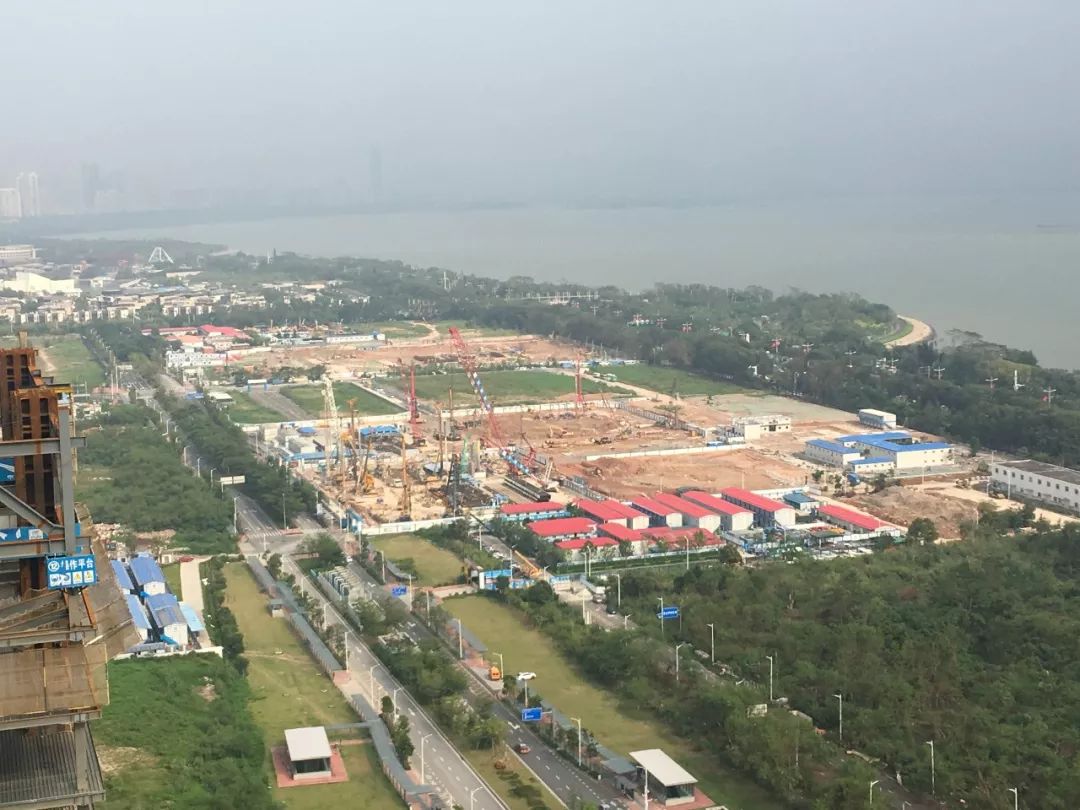
图/Image: © CAI
" 万科3D城市"正在实施中
Vanke 3D City is realizing
MVRDV 事务所由Winy Maas, Jacob van Rijs和Nathalie de Vries于1993年在荷兰鹿特丹创立。其设计和研究旨在为全球的当代城市规划和建筑设计提供解决方案。已建成的项目包括2000年汉诺威世博会荷兰馆,鹿特丹的市集住宅,天津滨海图书馆,香奈儿水晶屋,宝格丽吉隆坡旗舰店等。MVRDV的作品遍布全球,并多次获得国际奖项。MVRDV同时与荷兰代尔夫特理工大学开展合作,开设了The Why Factory,一个探讨未来城市规划与建筑的智库与研究机构。
特别声明
本文为自媒体、作者等档案号在建筑档案上传并发布,仅代表作者观点,不代表建筑档案的观点或立场,建筑档案仅提供信息发布平台。
18
好文章需要你的鼓励

 参与评论
参与评论
请回复有价值的信息,无意义的评论将很快被删除,账号将被禁止发言。
 评论区
评论区